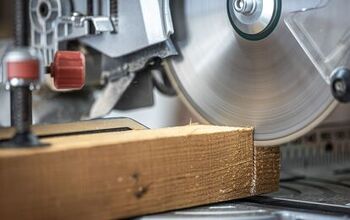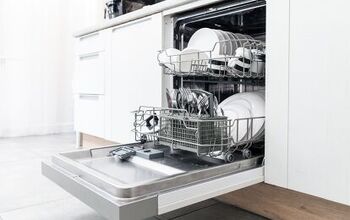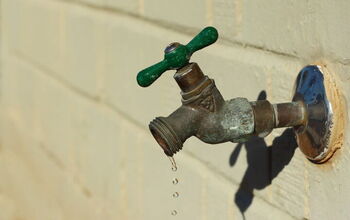Flat Vs. Beveled Faucet Washers: What Are The Major Differences?

Who knew a small, flat rubber ring could be such a versatile and essential tool in home improvement and repairs? The little washer works wonders with holding tight seals that prevent leaks, block debris, and hold parts in place. These “little plumbers’ helpers” are essential gadgets for installing and operating faucets, pipework, and showerheads.
Faucet washers come in a few different types, the most commonly used being flat washers and beveled washers. Both work well, sealing the space between the water lines and faucet components as well as allowing full water flow. Flat washers are the standard for all faucets, yet beveled washers are useful in worn or uneven fittings.
It’s always important to use manufacturers’ recommended parts in faucet installation to ensure optimal performance. However, some faucets may have specialty parts, or you may need to compensate for excessive wear. Knowing all of the properties and uses of each part will be beneficial in selecting the best option.
A General Look At Faucets
Faucets are the passageways through which we move the water we use from the municipal supply into our homes. They are the decorative part of the water transport system that grace our bathtubs and household sinks. Faucets come in many different styles and finishes but ultimately have the same basic architecture.
Anatomy of a Faucet
Despite appearances, the faucet is more than just the collection of hardware above the counter or behind the shower tiles. The visible functional parts consist of the spout, the spout assembly, the faucet lever or taps, and the aerator. These parts control the rate, splash, and direction of water flow into the sink or tub.
Some sinks have optional extendable sprayers, which can either be separate or built into the main spout. Other above-sink parts include the faucet body, hidden within the fixture housing, and the escutcheon, the outer base housing. The escutcheon secures the faucet assembly to the sink openings for stability and to seal out dripping water.
Just under the escutcheon plate, mounting bolts and nuts help hold everything in place and lead into the supply feed. Here you will find hot and cold water lines, shutoff valves, and compression couplings that control flow from the outside. In addition, you can find washers between the couplings, joints, and levers that form the passageway for incoming water.
Types Of Faucets
There are actually four different types of faucets common for indoor home use. These are the ball faucet, the cartridge faucet, the ceramic disc faucet, and the compression washer faucet. As the name suggests, the compression type is the design that depends on washers for its operation.
Compression washer faucets are basically as old as indoor plumbing itself and are the most used faucet type. They tend to be the least expensive to manufacture and purchase for home use. Compression faucets operate by rotating the taps or faucet lever to start and stop the flow of water.
Washers can wear down over time, however, and give way to leaks between joints and flow taps. Knowing when to replace them and which type to use is paramount to good faucet maintenance. Let’s take a look at what flat and beveled washers are and how and when to use them correctly.
What Are Flat Washers?
Flat washers are exactly as described: small discs that have level faces on both sides. Washer sizes can vary from as small as ⅛ of an inch to 1 ⅛ inches. The washer center opening allows bolts to slip through easily and ensures an airtight hold when bolts get tightened.
Flat washers work in multiple components within the faucet assembly. These include the hot and cold water taps, the aerator, and just above the water supply lines. The washers control leaks and regulate water pressure along the entire water line.
Rubber is the most popular material for washers, as they do an excellent job of fully shutting off water flow. The water pressure and general flow can’t wear the washers down quickly, which makes using the faucet an easy task. As washers degrade and crack, the internal metal parts inside the faucet can wear down from lack of friction protection.
What Are Beveled Washers?
Beveled washers, also called hillside washers or cone washers, are not standard issue. But just like flat washers, you can use them in many of the same ways when installing faucets. Used properly and in the correct circumstances, beveled washers provide the same serviceable seal.
A beveled washer is a small disc that has two differently planed surfaces on each side. One side is flat and level, while the other face has a more contoured, chiseled edge. Because of this, the beveled edge is slightly thicker and takes up more space between the areas joining together.
Beveled washers, like their flat counterparts, also come in a variety of different materials. In addition to rubber, you can find them in silicon, nylon, Teflon, and various metals. For use in faucets, rubber, silicone, and stainless steel work best since they’re rust-resistant.
Why Use Washers?
Regardless of their type, faucet washers serve as spacers between fasteners to ensure an even, secure fit. Faucet washers aid well-fitted pipe joints, reduce pressure, and minimize the amount of strain from water flow and everyday use. They are also important for creating a water seal when installing and repairing faucets.
Internally, the washer presses down against the seat or flow valve inside of a tap assembly. Ideally, it will create a closed-off seal that serves a two-fold purpose in the home water supply. It halts water flow to the spout when the tap is off and controls contaminants flowing through the pipes.
Because of their high durability and flexibility, washers also serve as insulators. Without washers, the metal internal parts will wear out much faster from the friction and be more open to corrosion. The installed washers extend the life and condition of the faucet housing, postponing repair or replacement.
What Are the Differences Between Flat and Beveled Washers?
Flat washers and beveled washers are the same round shape and come in the same number of sizes. Additionally, they are both used to cushion the contact surfaces between two joined parts and seal water from leaking. However, there are a couple of key differences between the two, in both appearance and application.
Flat washers are completely level on both sides, whereas beveled washers have one flat side and one chiseled side. This chiseled surface gives the beveled washer a sloped or conical shape that’s uneven and slightly larger than flat washers. Because of the contours, beveled washers supply a more level surface and tight seal for worn or broken faucet stems.
Flat and beveled washers also differ in how they engage a seal. With a flat washer, the all-around flush design seals from around the outside edge and through the center hole. Conversely, the beveled washer seals water flow primarily from the interior opening, since the uneven edges can inhibit movement.
Related Questions
How long do faucet washers last?
Quite a few things can influence a faucet washer’s lifespan, including material and frequency of use. For example, while they are flexible and sturdy, constant and repeated faucet use can wear down a washer’s surface. Rubber washers tend to last approximately one to two years on average. Washers made of silicone, nylon, or Teflon can last up to five years before needing replacement.
Why do tap washers wear out?
A tap washer’s functionality relies on its malleability–whether it can be compressed or squeezed to create a watertight seal. Turning the tap and the resulting water flow put a great deal of pressure and friction on these parts. Over time and repetition, the water can erode and wear down the washer surface and decrease its effectiveness.
What tools are needed to replace a faucet washer?
If you plan to bypass calling a plumber and fixing your faucet on your own, you’ll need some key tools. They include various screwdrivers, channel-lock pliers, an adjustable wrench, and replacement washers, seals, or cartridges. Sprayable penetrating oil, white vinegar, and a scouring pad are also good to have on hand to aid with repairs.
The Verdict
The clear frontrunner in the battle of the faucet washers is the flat washer due to ubiquitous and universal use. It’s extremely rare to find a faucet assembly that doesn’t have flat washers as the default option. And with flat washers being relatively inexpensive and widely available, they have a big advantage.
However, beveled washers aren’t pointless–they do play an important role in plumbing repair. Occasionally, a stem or seat within the faucet assembly will wear down and render a flat washer ineffective. A beveled washer can level out a worn or broken stem, so you don’t have to completely replace your faucet.
The likelihood of needing a beveled washer increases if you’ve installed a poorly made faucet brand. Some lower quality faucets wear down much faster under normal wear and tear due to inferior craftsmanship. A beveled washer can help in the interim if complete replacement is not an option.
More Related Guides

Stacy Randall is a wife, mother, and freelance writer from NOLA that has always had a love for DIY projects, home organization, and making spaces beautiful. Together with her husband, she has been spending the last several years lovingly renovating her grandparent's former home, making it their own and learning a lot about life along the way.
More by Stacy Randall



























